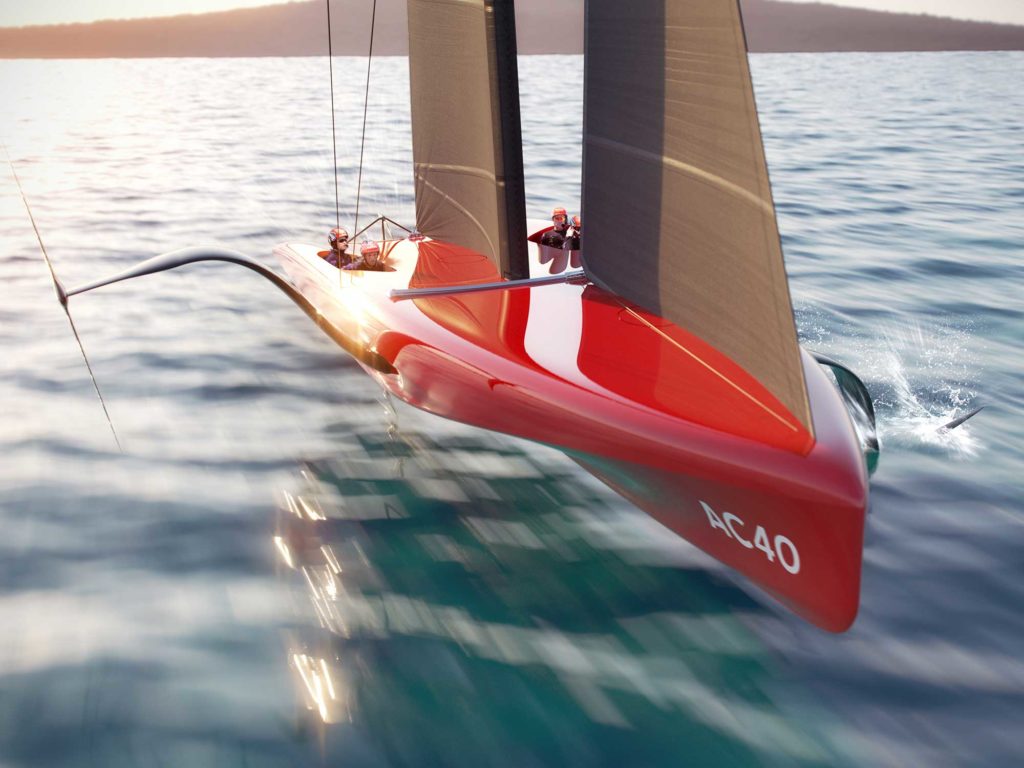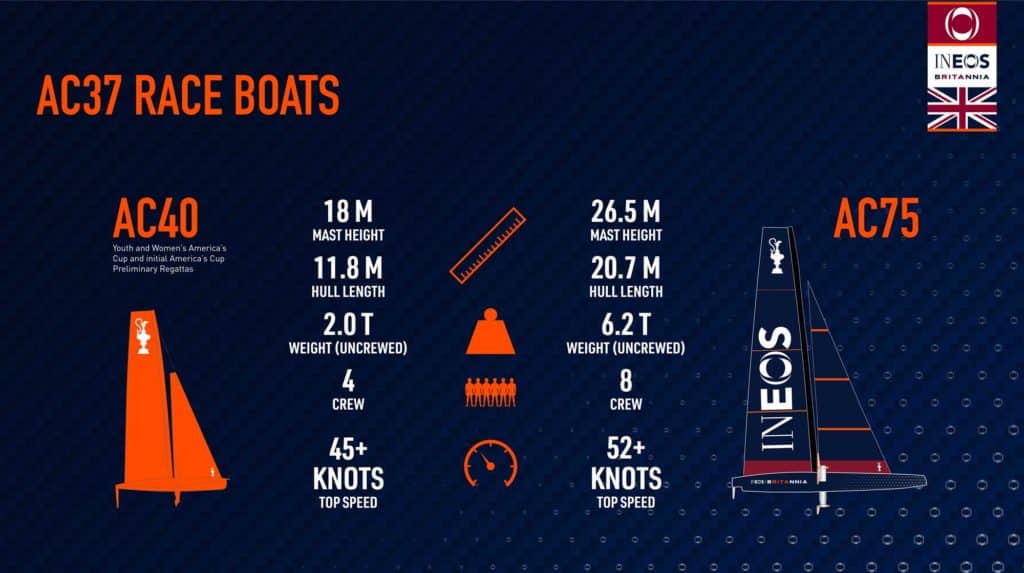
There was no venue to announce, but there was plenty laid out onto the table today as the Protocol of the 37th America’s Cup was released by the Defender, the Royal New Zealand Yacht Squadron and Emirates Team New Zealand and the Challenger of Record—Royal Yacht Squadron Ltd and their representative team INEOS Britannia.
As to the future venue, ETNZ’s Grant Dalton said, “Initially, we set a date of September 17 to announce, which was too ambitious…New Zealand is not out of the picture, but the chances of it happening in new Zealand are slim.”
Regardless, the Protocol release today “sets the foundations and rules of participation for all teams in the 37th America’s Cup and records the items of mutual consent under the America’s Cup Deed of Gift agreed between the Defender and the Challenger of Record which establishes the basis for a multi-challenger event.”
In the announcement release from America’s Cup management, INEOS Britannia CEO and Team Principal Sir Ben Ainslie said: “As Challenger of Record, INEOS Britannia has sought with the Defender, Emirates Team New Zealand, to make the next America’s Cup less expensive and more inclusive. The Protocol this time around will see reduced team operating costs without compromising any of the technical development which the Cup is so famous for. There is an opportunity for change, so for AC37 we will see the first Women’s America’s Cup Regatta and we also welcome back the Youth America’s Cup [which never actually came to fruition—Ed].”
According to the announcement, an updated “Version 2” of the AC75 Class Rule has been released, which specifies the latest requirements to be compliant with the class rule including modification requirements for new teams buying ‘Version 1 AC75’s’ that were built and used by teams competing in AC36.
According to Daniel Bernasconi, ETNZ’s Technical Director, the most notable improvements to the AC75 are aimed at improving the boat’s takeoff speeds lower into the wind range, notably with larger spans and deeper foils and no Code Zeros, as well as fewer crew, hinting a possible return of the cyclors—should any team want to go there again.
Cost-reduction efforts include the following: Teams are only permitted to build one new AC75; Limitations on the quantity of foils and componentry that can be built for the AC75s; Introduction of the multipurpose One-Design AC40 class which teams will be able to convert and use for testing, component development and match-race training. The AC40 class will then be converted back to the measured One Design AC40 class for use in the America’s Cup Women’s Regatta and America’s Cup Youth events.
“These events have been developed to create new accelerated inclusive pathways into the America’s Cup for the growing global talent pool of female and youth sailors,” the announcement states. “Race crew onboard the AC75 reduced from 11 to 8 sailors: Further One design elements; Shared team recon; Supplied starting software; The AC75 class of boat will be maintained for the next two events.”
A “shared recon” program, the statement goes to say is “aimed to give America’s Cup fans the inside track on the testing and development on the water by all the teams. Observations will be made public via AC media channels so that fans can stay up to date with the latest developments as they emerge from the sheds throughout the whole of AC37.”
There’s also talk of “Drive to Survive” type documentary in the works.
According to the schedule, which was also part of the release, there will be “up to three Preliminary Regattas, the first two raced in AC40s, the last one at the Match venue in AC75s. The Challenger Selection Series and the America’s Cup Match will be held in 2024, with the Match Venue and approximate event dates to be announced by 31st March 2022.”
The Protocol also outlines restrictions on when the AC75s can be sailed: “With the anticipated benefit angled towards new Challengers to AC37, existing teams are not permitted to sail their AC75s before the 17th September 2022, however new Challengers entering AC37 that have purchased a second-hand AC75 are permitted to sail their AC75 for 20 days from 17th June 2022. There are other restricted sailing periods, which are provisional and will be confirmed once the Match venue is announced.”

The Crew Nationality Rule will require 100-percent of the race crew for each competitor to either be a passport holder of the country of the team’s yacht club as of next March, or “to have been physically present in that country (or, acting on behalf of such yacht club in Auckland, the venue of the AC36 Events) for 18 months of the previous three years prior to 17th March 2021. As an exception to this requirement, there will be a discretionary provision allowing a quota of non-nationals on the race crew for competitors from ‘Emerging Nations.’”
It is also now a “mandated obligation of all teams” to build and operate two hydrogen powered foiling chase boats for their campaign (subject to proof of concept).
Race Management, the announcement goes on to say will be “entirely independent of the event organization and will be led by the Regatta Director. The umpires and jury will manage all on the water rules and disputes for all events.” Also, there will be an independent Rules and Measurement Committees “responsible for interpretation of the AC75 Class Rule and the yacht measurement,” and a three-person Arbitration Panel that “will oversee and deal with all Protocol disputes with published decisions to maintain the integrity of the event. And there will be a new fast-track process to reduce the potential delays in making decisions on disputed items.”
There will be much to follow in the coming days we dive into the Protocol, the class rules, and what happens next when entries are accepted after December 1.









